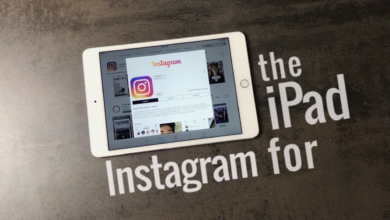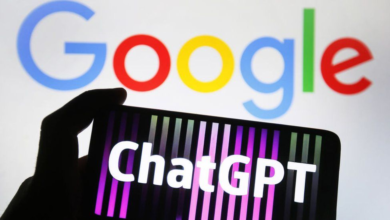5G vs 6G: What’s Next in American Telecom?
5G vs 6G Discover the key differences, timeline, and impact of next gen American Telecom in the U.S. Will 6G replace 5G. Learn more now.

The American Telecom evolution of wireless technology is advancing at an unprecedented pace, with 5G vs 6G becoming a central topic in American telecom. As 5G networks continue to expand across the U.S., researchers and industry leaders are already laying the groundwork for 6G, promising even faster speeds, lower latency, and revolutionary applications. This article explores the key differences between 5G and 6G, the current state of American telecommunications, and what the future holds for next-generation connectivity.
The transition from 5G to 6G will redefine industries, enabling advancements in artificial intelligence, autonomous systems, and immersive technologies. However, challenges such as infrastructure development, regulatory hurdles, and global competition remain. Understanding the trajectory of these technologies is crucial for businesses, policymakers, and consumers preparing for the next wave of digital transformation. The American Telecom technology supports a wide range of applications, from high-definition video streaming to IoT (Internet of Things) devices and smart cities.
5G vs 6G: What’s Next in American Telecom
The Current State of 5G in the U.S.
5G technology has been a game-changer for American telecom, offering significantly faster download speeds, reduced latency, and enhanced network reliability compared to its predecessor, 4G LTE. Major carriers like Verizon, AT&T, and T-Mobile have invested billions in deploying 5G infrastructure, with coverage expanding across urban and suburban areas.
5G Deployment
Despite its advancements, 5G deployment in the U.S. faces challenges, including spectrum allocation issues, high infrastructure costs, and varying coverage quality in rural regions. Additionally, the competition between mid-band, low-band, and millimeter-wave (mmWave) frequencies has led to inconsistencies in user experience. While mmWave offers ultra-fast speeds, its limited range requires dense infrastructure, making widespread deployment difficult.
What is 6G
6G is expected to be the next leap in wireless communication, with theoretical speeds reaching up to 1 terabit per second (Tbps), latency as low as 1 microsecond, and seamless integration with AI-driven networks. Unlike 5G, which primarily focuses on enhancing mobile broadband and IoT, 6G aims to enable futuristic applications such as holographic communications, advanced robotics, and brain-computer interfaces.
Differences Between 5G and 6G
One of the most significant differences between 5G and 6G lies in the frequency spectrum. While 5G operates in sub-6 GHz and mmWave bands (up to 100 GHz), 6G is expected to utilize terahertz (THz) waves (100 GHz to 3 THz), allowing for unprecedented data transmission rates. However, this also presents challenges, as higher frequencies have shorter ranges and are more susceptible to interference from obstacles like buildings and weather conditions.
The Road to 6G
The race to develop 6G is already underway, with the U.S. government, academic institutions, and tech giants investing heavily in research. The Next G Alliance, led by the Alliance for Telecommunications Industry Solutions (ATIS), is a key initiative bringing together companies like Apple, Google, and Qualcomm to establish American Telecom leadership in 6G.
Research
American Telecom Universities such as MIT and Stanford are also at the forefront of 6G research, exploring breakthroughs in materials science, quantum computing, and wireless protocols. The Federal Communications Commission (FCC) has begun exploring spectrum allocation for 6G, though regulatory frameworks are still in early stages.
Network Intelligence
Another key distinction is network intelligence. 6G will leverage AI and machine learning to optimize network performance dynamically, enabling self-healing networks and real-time resource allocation. This will be crucial for supporting next-gen applications like autonomous vehicles, smart infrastructure, and immersive virtual reality environments.
Development in the U.S.
One of the biggest hurdles for 6G will be infrastructure scalability. While 5G requires a dense network of small cells, 6G may need an even more intricate system, including satellite integration for global coverage. American Telecom Companies like SpaceX (with Starlink) and Amazon (Project Kuiper) are already working on satellite-based internet, which could play a crucial role in 6G deployment.
Healthcare & Smart Cities
Remote surgeries with near-zero latency, AI-driven diagnostics, and real-time patient monitoring will become mainstream. Healthcare is a vital sector focused on maintaining and improving physical and mental well-being through prevention, diagnosis, treatment, and rehabilitation. These cities integrate real-time data analytics to manage traffic, energy, waste, and security efficiently, ensuring sustainability and convenience.
Entertainment
Holographic displays, immersive VR/AR experiences, and real-time 3D streaming will redefine digital media. Real-time 3D streaming and multi-sensory content will allow audiences to interact with concerts, sports events, and movies in unprecedented ways, creating fully immersive metaverse experiences.
Challenges and Considerations for 6G Adoption
Infrastructure Costs
The transition to 6G will require massive investments in infrastructure, far surpassing the costs associated with 5G deployment. Building a nationwide 6G network will require massive investments in fiber optics, small cells, and satellite systems. Autonomous traffic systems, energy-efficient grids, and AI-powered public services will rely on 6G’s ultra-reliable connectivity.
Spectrum Regulation
Spectrum regulation will play a critical role in 6G deployment, as the technology is expected to utilize high-frequency terahertz (THz) bands that require careful allocation to avoid interference with existing services. Governments must allocate THz frequencies while ensuring minimal interference with existing services.
Security Risks
Higher connectivity increases vulnerability to cyber threats, necessitating advanced encryption and AI-driven security protocols. The ultra-connected nature of 6G networks will introduce unprecedented security risks, including vulnerabilities to sophisticated cyberattacks, AI-driven threats, and large-scale data breaches.
Global Competition
The race for 6G dominance has intensified global competition, with the U.S., China, Europe, and Japan all vying for technological leadership through massive R&D investments and strategic alliances. China and Europe are also aggressively pursuing 6G, raising concerns over technological dominance and standardization.
Read More: Transforming Insurance Operations: The Ultimate Guide to CRM Solutions
Conclusion
The transition from 5G vs 6G marks a pivotal moment in American telecom, with 6G poised to revolutionize industries and redefine connectivity. While 5G continues to mature, early research into 6G highlights its potential to enable groundbreaking applications, from AI-driven networks to holographic communications. However, significant challenges ranging from infrastructure costs to global competition must be addressed before 6G becomes a reality.
As the American Telecom positions itself as a leader in next-gen wireless technology, collaboration between government, academia, and private enterprises will be crucial. The race to 6G is not just about speed; it’s about shaping the future of digital innovation. For businesses and consumers alike, staying informed about these advancements will be key to navigating the evolving American Telecom landscape.
FAQs
What is the main difference between 5G and 6G?
6G is expected to be significantly faster (up to 1 Tbps) with near-instant latency, leveraging terahertz frequencies and AI-driven networks.
When will 6G be available in the U.S.?
Commercial 6G deployment is projected around 2030, though research and testing are already underway. 6G is expected to begin initial testing and early deployments around 2030, following the typical 10-year cycle between wireless generations.
Will 6G replace 5G?
Initially, 6G will complement 5G, gradually replacing it as infrastructure and devices evolve. 6G will not immediately replace 5G but will eventually supersede it as the next-generation standard.
What industries will benefit most from 6G?
Healthcare, smart cities, autonomous vehicles, and immersive tech will see the most transformative impacts. Additionally, manufacturing, augmented/virtual reality, and defense will see transformative gains from ultra-low latency and hyper-connectivity.
Is the U.S. leading in 6G development?
The U.S. is a key player, but faces strong competition from China, South Korea, and Europe in 6G innovation. American Telecom companies and universities are accelerating efforts to lead in 6G innovation.











